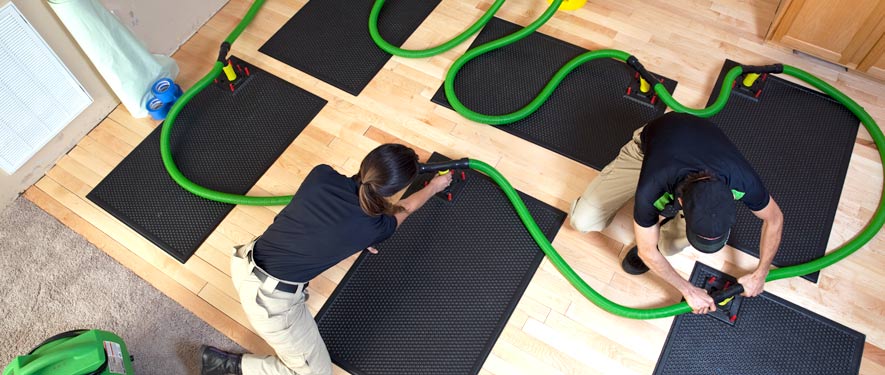
Step 4: Drying and Dehumidification
Our Water Damage Restoration Process
After the initial water removal, it may seem like the floors and walls are dry, but a closer inspection reveals lingering moisture. Most building materials, including wood, drywall, and flooring, are porous and prone to retaining water. This can lead to material deterioration, warping, and potential mold damage.
To address this, our professionals employ a drying and dehumidification process. By considering room measurements, temperature, and relative humidity, we determine the optimal number of air movers and dehumidifiers needed to dry your property effectively. Moisture meters are utilized to carefully monitor the progress until the materials reach acceptable drying levels.
Our team diligently checks moisture levels in floors and walls throughout the drying process. Industrial-grade dehumidifiers are deployed to prevent secondary water damage such as swelling and warping, while high-speed air movers facilitate moisture evaporation across walls, carpets, pads, and furniture.
With the drying process underway, we proceed to Step 5: Cleaning and Repair.
Drying / Dehumidification
Our Professionals will use room measurements, temperature, and relative humidity to determine the optimal number of air movers and dehumidifiers to dry your home or business. We’ll carefully monitor the progress using moisture meters until the materials return to acceptable drying goals.
- Use Dehumidification Equipment
- Use Monitoring Equipment to Track Progress
Monitor Floor and Walls
We check the moisture levels to monitor the drying process.
- Monitor Floors
- Monitor Walls
Drying Equipment
- Industrial-grade dehumidifiers help prevent secondary water damage like swelling and warping of floors, walls, and furniture.
- High-speed air movers create airflow across walls, carpets, pads, and furniture, which accelerates the evaporation of moisture.






 24/7 Emergency Service
24/7 Emergency Service


